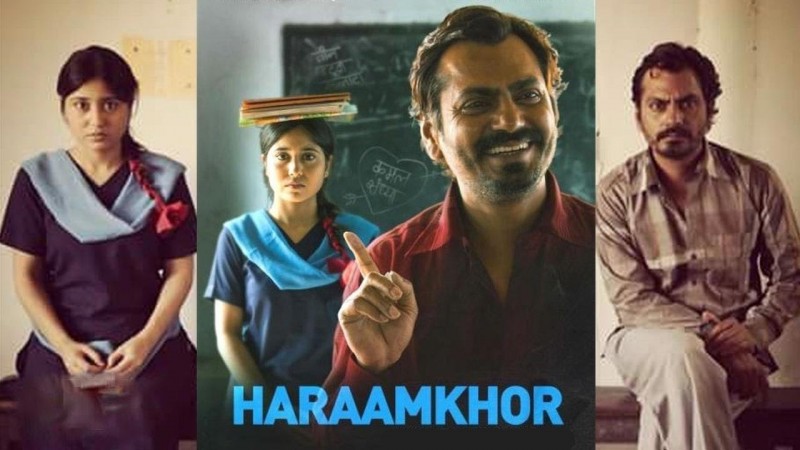
In order to create their works of art, filmmakers frequently use the world of film as a creative playground. On the other hand, copyright disputes can occasionally result from this inventiveness. Bal-Bharati, Maharashtra's textbook bureau, filed a case against filmmaker Shlok Sharma in a recent case that has attracted a lot of attention. The bureau claimed that there were striking similarities between its logo and promotional scenes from Sharma's controversial film, "Haramkhor." The thin line separating creative expression from copyright infringement is called into question by this incident.
Known for creating textbooks and other educational materials, Bal-Bharati is a prominent Maharashtra educational institution. An iconic aspect of the institution's identity, the logo symbolises its dedication to education. On the other hand, Shlok Sharma's 2017 Hindi-language picture "Haramkhor" is renowned for its realistic depiction of intricate relationships in a rural environment.
Bal-Bharati lodged a complaint with the Pune police, claiming that their logo appeared in multiple promotional scenes of "Haramkhor" and was used without permission. The complaint argued that the logo's use in the movie's marketing could damage the reputation of the university and make viewers unsure of what the movie is associated with.
The colour, shape, and arrangement of elements in the logo and specific scenes from the film's promotional materials were the main points of similarity that Bal-Bharati brought up. The logo, which is an open book in the middle of a radiant sunburst, represents enlightenment and knowledge. The scenes from "Haramkhor" that are under scrutiny are said to have featured an open book and a sunburst motif, although in a different setting.
Shlok Sharma, the director of "Haramkhor," strongly refuted the claims that he had violated anyone's copyright. He maintained that the promotional materials for his movie did not purposefully mimic or copy the Bal-Bharati logo. Sharma claimed that the resemblance was entirely accidental and coincidental. He went on to say that the promotional team for the movie had created the materials on their own, without consulting or referencing the Bal-Bharati logo.
In the field of creative arts, copyright infringement cases can be complex and frequently necessitate a careful analysis of the evidence offered. Regarding this instance, the legal ramifications centre on whether or not the Bal-Bharati logo and the promotional scenes from "Haramkhor" violate copyright.
Several elements are taken into consideration when determining whether copyright infringement has occurred, including:
Substantial Similarity: The court must determine whether there are enough similarities between the promotional scenes and the logo for them to be deemed an infringement. This entails a thorough examination of the contextual, thematic, and visual components.
Intention: In copyright cases, intent is very important. The evidence of deliberate infringement is strengthened if it can be demonstrated that the filmmakers appropriated the logo.
Independent Creation: The filmmakers' argument that the resemblances are accidental may have more weight if they can show that they independently produced the marketing materials without being aware of the logo.
Transformative Use: When a copyrighted work is used in a novel and inventive way that significantly increases its value, it is permitted by copyright law. Whether or not the logo's use in the marketing materials counts as transformative must be determined by the court.
Damage and Perplexity: Bal-Bharati's contention that the movie's advertising materials might damage their brand or lead to audience confusion is an additional factor the court needs to take into account.
The case is still pending and the legal process is still going on as of this writing. It is important to understand that copyright disputes in the creative industries can be extremely complex and subjective, with the final decision potentially relying on the particular evidence put forth and the arguments put forth in court.
The legal dispute between Bal-Bharati and filmmaker Shlok Sharma stems from the former's claim that the logo of the educational institution is similar to scenes used in promotional material for the movie "Haramkhor," while the latter is suing for copyright infringement. Shlok Sharma insists that the similarities are purely coincidental, despite the fact that Bal-Bharati has voiced legitimate concerns about safeguarding its reputation and intellectual property. In the end, the court will decide whether copyright infringement has taken place and, if so, what sanctions or remedies should be implemented as the legal process progresses. This case serves as a reminder of the need for distinct legal boundaries in the area of artistic expression as well as the significance of comprehending copyright laws in the creative industries.
A Cinematic Marvel Crafted in Just 16 Days
Helicopter Eela: When Bollywood Takes Flight with Hollywood Inspiration
'Pyar Mein Twist' Brings Back 'Bobby' Stars After Three Decades"